See, South Yorkshire has a reputation. It’s not necessarily a *bad* reputation (we’re not dealing with a Luton here), just that most people seem to associate it with coal mines and not much else. It’s almost as if it’s still 1984 in the minds of the British public: the whole area filled with small mining towns, terraced housing, outdoor toilets, ‘local pubs for local people’, and a high incidence of poverty. Now of course some of that is true – it’s incredibly uneconomic to replenish an area’s entire housing stock just because the economic conditions have changed – but note Dore & Totley, suburbs in the SW of Sheffield, are one of the most affluent local government wards outside of London, so it’s not all brass bands and pints of bitter.
The main focus point in South Yorkshire is the city of Sheffield, which shall be the subject of a later specific post – suffice to say it’s the greatest city you’ve never heard of. Though I have dropped a podcast episode about South Yorkshire in general, and Sheffield in particular, so go check it out as a companion piece.

One of the main streets in Doncaster, with seat designs reflecting its history. This is about as reminiscent as it gets.
The most historic town in the region is Doncaster, although now it’s more famous these days for its racecourse, its football club (on whom I once won £100 in one of my very rare visits to a bookmaker), and for being the home of the first woman I ever had a crush on (a penpal called Rachel, who I haven’t spoken to since 1994. She did the most silly thing and agreed to meet me. Amazing how often that puts people off!). Despite being an old Roman fort built by a bridge on Ermine Street (the road between London and York) over the river Don (hence its name – ‘Don’, incidentally, being a variation on the ancient Celtic goddess Danu), there’s not much left in the city relating to this period; Chester and York it is not.
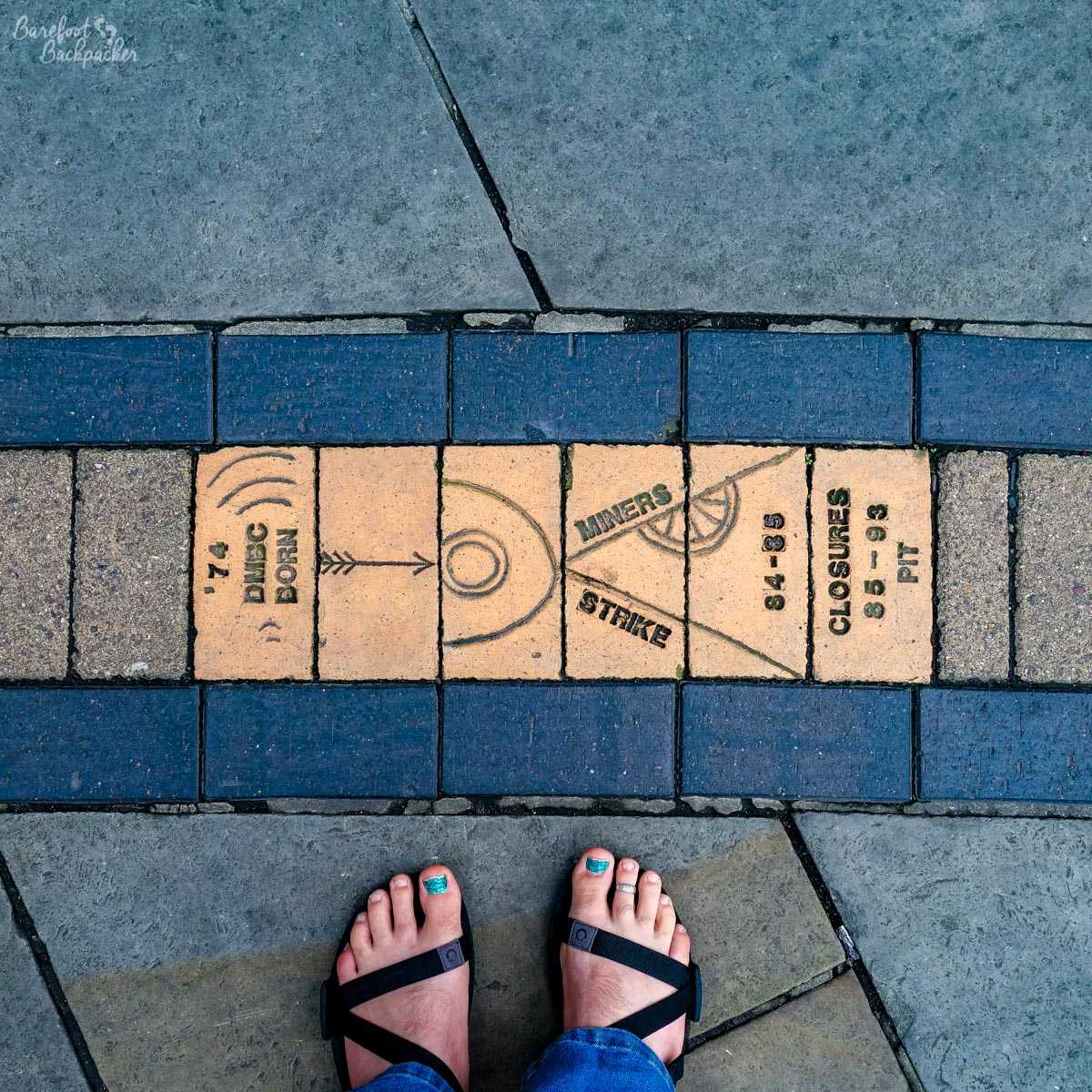
The timeline on the street. Yes, I am wearing sandals. Bite me.
The nearest it gets to celebrating its history is a ‘timeline’ in the pavements along its streets, which documents all the things that happened in the area which have been long forgotten and no longer visible. While a pleasant enough town, having some good beer (!), it’s not a place likely to be on anyone’s tourist radar – even its low-cost airport (Doncaster-Sheffield Robin Hood Airport – its name probably more interesting than its location, and its dual-language signage suggesting it looks more towards Warsaw than London for business) is used purely as a departure/arrival point before heading on to more interesting places like Sheffield or Leeds.
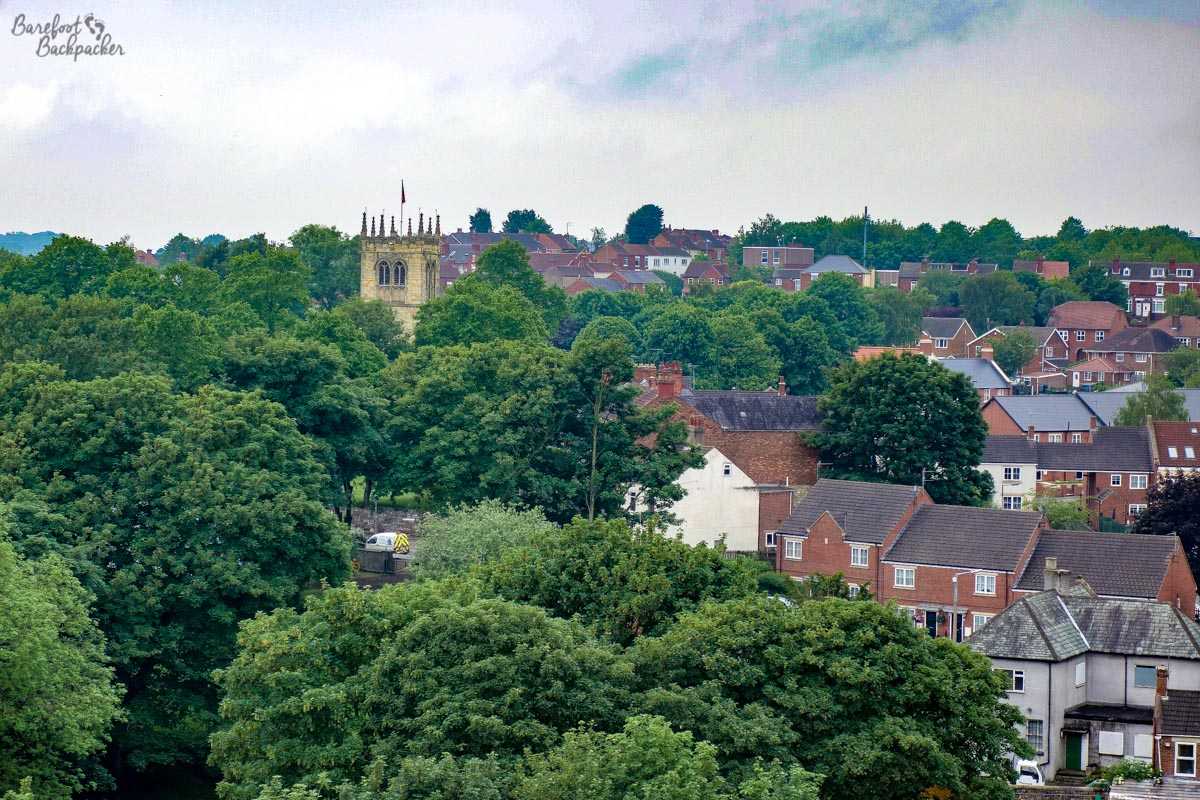
Looking out over Conisborough Town Centre from the castle.
Nearby Conisbrough (with its famous castle) is now a small industrial town in the borough of Doncaster, although at one point this was probably the most important place in what is now South Yorkshire. That the castle had been partly owned by kings since as far back as King ‘I seem to have something in my eye’ Harold is testament to the area’s importance, while the church here dates from the 700s and may well be one of the oldest buildings in the county. It’s likely this spot was so important due to a combination of the prominent hills and the proximity of the powerful River Don.

The old church in Conisborough.
Just South of Conisbrough lies Rotherham, a much-maligned town in the shadow of Sheffield; despite having over 100,000 people it’s often seen as merely an ‘overspill’, and indeed not only lies closer to the Meadowhall shopping centre than Sheffield itself does, but the main railway line connecting the two is single-track for part of its length. It’s telling that, in the UK at least, Rotherham’s more noted these days for a child sex abuse scandal than for anything particular about the town itself.
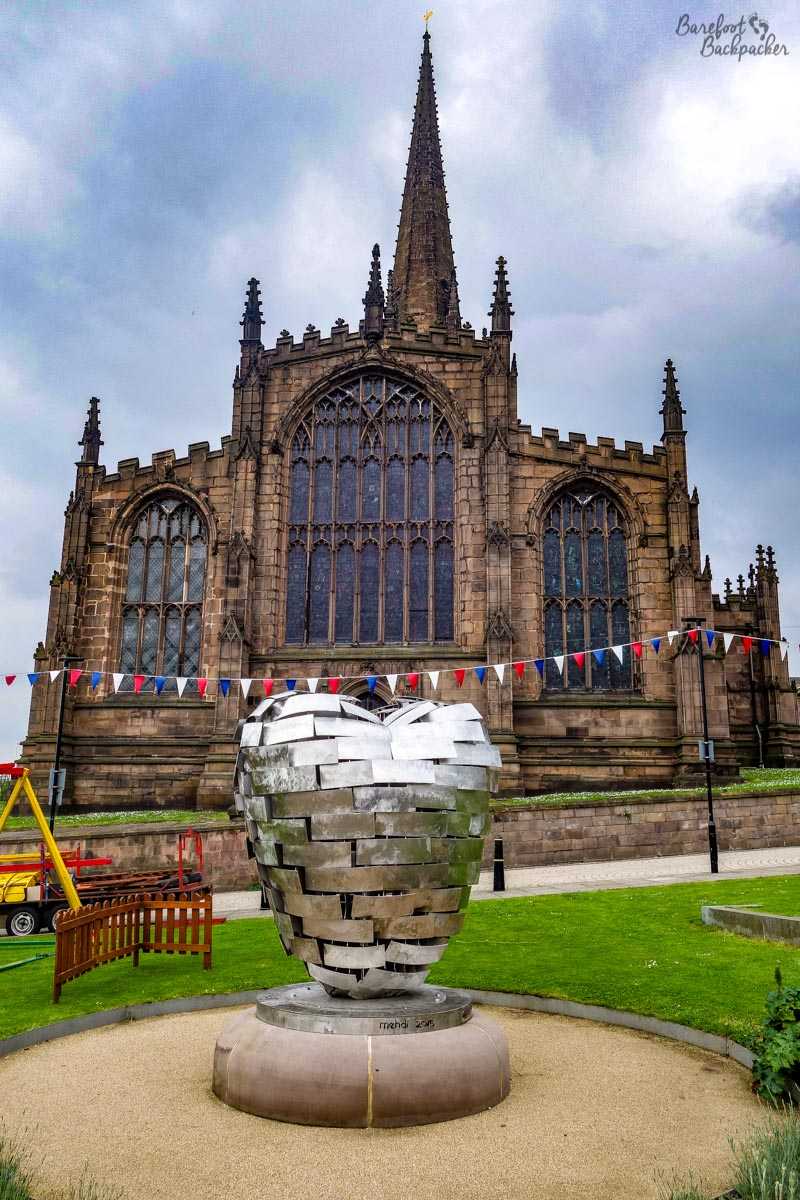
The church in Rotherham, complete with ‘heart’ sculpture in front, representing the ‘beating heart’ of Yorkshire. Or something.
In the South of Rotherham there are remains of an old Roman granary and a couple of other outbuildings, that lie in a large landscaped park, a rare link to the ancient history of the area – the town’s more notable past is much more recent.

All that remains of Roman Rotherham (indeed in much of South Yorkshire); a few stone foundations in a park.
The main tourist attraction here is the Magna Science Adventure Centre; a large interactive/educational museum built on the site of a large steel works that aims to display and educate about not only the industrial heritage of the region but also the science behind that industry. It was, naturally, built on the site of a vast industrial works, and is a fully interactive and child-friendly site divided into four segments, relating to the four traditional elements of Earth, Air, Fire, and Water. Each segment has different exhibits relating to science, showing for example how forges work, how tornadoes form, and the applications of the power of water. It’s a great site for budding engineers and scientists. Its centrepiece is ‘The Big Melt’ – a live demonstration of an authentic huge electric arc furnace that had been previously used for real in one of the steel-making factories that Sheffield was world-renowned for. Which I seem to have lost all the pictures of …
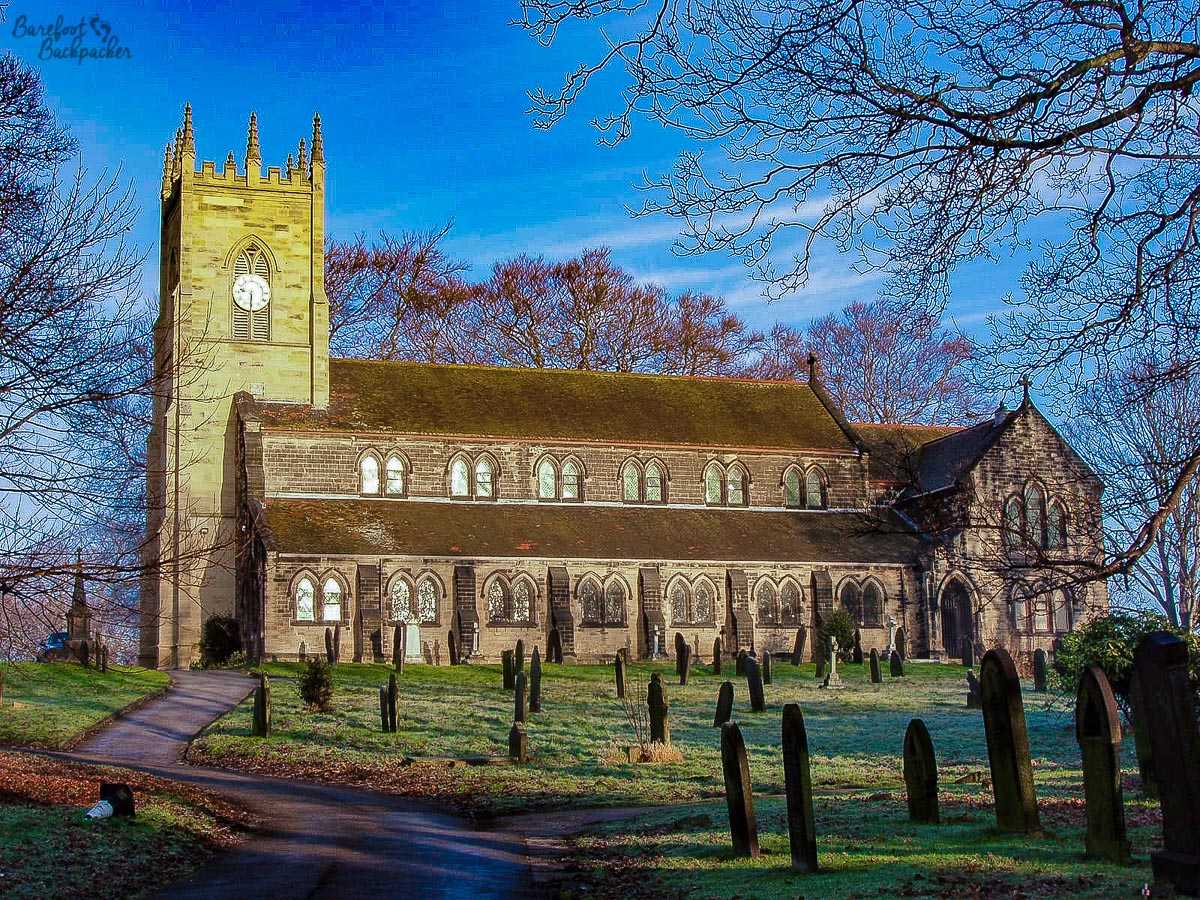
The church in Wath-Upon-Dearne, in the Dearne Valley. I do seem to be posting a lot of pictures of churches here…
To the north-west of Rotherham lies the Dearne Valley – historically a hotspot of coal, but now mainly devoted to identikit and soulless call centres (the new Working Classes) where people spend 8 hours a day either trying to sell mundane services or handling calls from dissatisfied customers who are unhappy with the mundane services that they’ve previously been sold. The firm I work for has one such call centre here, staffed with advisors who will happily switch allegiance to any of the other nearby companies based purely on salary & bonuses; the job’s pretty much the same, only the greeting differs.

Barnsley Town Hall – a fine example of Art Deco, and quite an unusual place for it too.
At the end of the industrial section of the Dearne Valley is Barnsley, another one of those towns that exists primarily for locals rather than as a place for tourists. That said, the local council has tried to tap into the unrealised potential and has set up the ‘Barnsley Experience’ in the town hall – a hyper-local museum about the history of the area with a considerable number of interactive exhibits and information specifically local to the Barnsley area (including short films depicting stereotypical Barnsley residents across the centuries, and a temporary exhibit on one of the area’s most famous sons, the cricket umpire Dickie Bird).

The Dickie Bird exhibit in the Barnsley Experience, and an example of adulation towards one of their own.
It’s telling that on my visit, the vast majority of other visitors there, if not Barnsley resident, at least had a very strong connection to the area; essentially the museum was telling people about their own history – an important and often overlooked aspect of community.
One of the more unexpected attractions in the area, right on the border between what is now West and South Yorkshire, is the Yorkshire Sculpture park. Set in rolling countryside in the grounds of Bretton Hall (ex-manor house, ex-teacher training college, now apparently a hotel and spa), it was originally created at the behest of noted sculptor Henry Moore in 1977 – indeed sculptures by Moore are scattered throughout the site, although other artists are well represented. One of the quirks of the site is that art on display – either in the park itself or in one of the buildings scattered around – are regularly changed, so pretty much every time you visit you’ll get to see something new.

Three sculptures from Henry Moore – Upright Motives #1, Glenkiln Cross #2 and #7, created 1955-56 out of bronze.
The layout of the park is more of a country park with scattered sculptures in, rather than an art gallery in the open air. It’s a good place to walk around for a couple of hours (you’ll need at least two to get a good feel of everything) – it’s quite steep in parts so not ideal if you’re a bit late and need to run back to the entrance to catch a bus (not that I’m speaking from experience here or anything…), and the trails are paths over grass rather than being defined footpaths, but I find that makes it all the more ‘genuine’.

Panoramic view over the main lake in Yorkshire Sculpture Park.
In the middle of the park is a large lake, surrounded by woodland, that’s noted for its flowers and wildlife, while on the edge is a chapel (St Bartholomew’s), which is used as a small gallery for temporary art – on my visit it was the venue for a sound exhibit. In the gardens of the chapel I could hear birdsong; nothing special there but in fact this was another ‘exhibit’ – recorded birdsong from out-of-place wildlife from tropical rainforests. For a non-twitcher like me, I wouldn’t have noticed. Apparently near the lake there are naturally-recorded calls from hyenas, which confuse people.

St Bartholomew’s Chapel. To the left is the ‘Iron Tree’, a sculpture made from 97 pieces of iron cast from branches of a variety of tree by Chinese artist and dissident Ai Weiwei.
Also around the park are small galleries with other exhibitions in; these tend to be closed in Winter. The open-air sculptures though are legion and visible all year round – many sculptors are represented across space and time, including people like Anthony Gormley, Ai Weiwei, and Barbara Hepworth.

One of Anthony Gormley’s iron man statues, atop a plinth.

Wakefield Cathedral, outer view.
The nearest place to the sculpture park is Wakefield. One of those ‘cathedral cities’ from way back (a surprisingly recent 1888 – the Victorians had a bit of an administrative tidy-up), the cathedral (Church of All Saints) still acts as the central point of the city; compared with more famous cities like Salisbury and Winchester it’s relatively small and less grandiose, but even as it is, it oozes power and passion. On my visit they were about to have a community celebration event, and even with half an hour to go it was quite crowded.

Wakefield Cathedral, inside view.
It’s interesting to compare Wakefield and Barnsley; although a similar size, Wakefield ‘feels’ far bigger – there certainly seems to be more to the city centre, not just in terms of shops but also in ambience. Wakefield, administratively, now lies in West rather than South Yorkshire, making it more aligned with Leeds rather than Sheffield, but in truth it’s an unexpected worthwhile destination in its own right; a small but comfortable place from which it’s easy to get out to both the industrial heritage of Yorkshire and the wilds of the open country (Leeds is less than 20 minutes away, but so are the likes of Sowerby Bridge and the Calder Valley). It has a nice but functional compact shopping area and the most ‘hipster’ micropub I’ve ever been to, even down to the bearded barman!
I talk a bit more about nearby parts of West Yorkshire on another podcast episode.

Even somewhere like Wakefield promotes its famous sons & daughters – though being Rugby League territory, this seems the most appropriate to post.
See, anywhere can be interesting, if you’re prepared to put in the effort to find it out. Paris and London may have world-renowned art museums and thousands of years of occupation and generic history, but without places like South Yorkshire, like Barnsley and Rotherham, they would never have achieved the greatness that they have – for instance Barnsley was a major regional centre for both glass manufacture and linen production, both raw materials used in creation of goods that would be traded and used in the capital.
So many places, in the UK and beyond, are mere names on a map, football teams that occasionally play clubs you’ve heard of, places that you see signs for on the way to somewhere with more fame. These are the places people live, where they’re born, work, die, places that are the lifeblood of a country; over 80% of the UK population lives outside London, in places like this. And these are the places I like to blog about.
—-
Like this post? Pin it!!
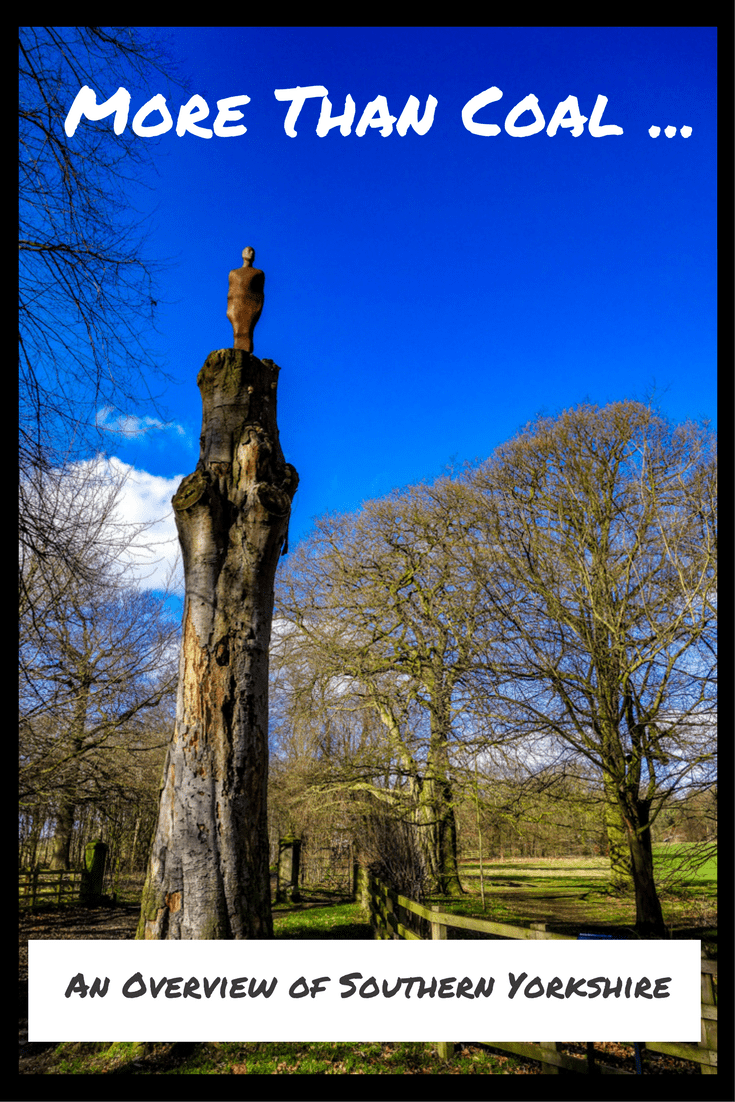
—
Authorities visited: Rotherham, Doncaster, Barnsley, Wakefield. Dates visited: 11 June 2016, and 4 & 18 March 2017, bar the pic of Wath Church taken 14 Jan 2009.